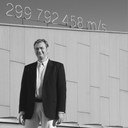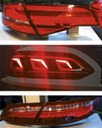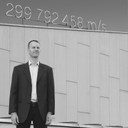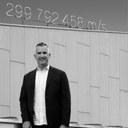Articles & Interviews
Resources | LpR Article | Horticulture | Applications |
Mar 28, 2019
Enriching Horticultural Lighting for Faster Growth and Better Crops
 Horticulture lighting is no new lighting application, but it gained momentum with the introduction and evolution of LED lighting, and it is meanwhile one of the fastest growing markets in lighting. Dr. Richard Blakey, Application Engineer at Würth Elektronik eiSos, explains how LED-based horticultural lighting can deliver even bigger advantages for commercial growers by introducing additional wavelengths that increase photosynthetic response - like Würth Elektronik's new members of the WL-SMDC SMD Mono-Color Ceramic LED Waterclear family that is used as a reference in the article.
Read more »
Horticulture lighting is no new lighting application, but it gained momentum with the introduction and evolution of LED lighting, and it is meanwhile one of the fastest growing markets in lighting. Dr. Richard Blakey, Application Engineer at Würth Elektronik eiSos, explains how LED-based horticultural lighting can deliver even bigger advantages for commercial growers by introducing additional wavelengths that increase photosynthetic response - like Würth Elektronik's new members of the WL-SMDC SMD Mono-Color Ceramic LED Waterclear family that is used as a reference in the article.
Read more »
Research Reports | Resources | Smart Lighting + IoT | OpenAIS | LpR Article |
Mar 28, 2019
User Evaluation of the OpenAIS Pilot Installation
 The OpenAIS project (2015-2018) has developed an open IoT lighting solution to enable a wider community to deliver the smartness of light, allowing easy adaptability to cater for the diversity of people and demands. The project is a cooperation between seven leading companies in the European industry and two academic partners: Signify, Zumtobel, Tridonic, Johnson Controls, Dynniq Belgium, NXP, ARM, Eindhoven University of Technology. Thomas van de Werff, Harm van Essen and Berry Eggen from the Eindhoven University of Technology describe the evaluation results of the pilot installation in a real office building in Eindhoven (The Netherlands), a former Philips factory.
Read more »
The OpenAIS project (2015-2018) has developed an open IoT lighting solution to enable a wider community to deliver the smartness of light, allowing easy adaptability to cater for the diversity of people and demands. The project is a cooperation between seven leading companies in the European industry and two academic partners: Signify, Zumtobel, Tridonic, Johnson Controls, Dynniq Belgium, NXP, ARM, Eindhoven University of Technology. Thomas van de Werff, Harm van Essen and Berry Eggen from the Eindhoven University of Technology describe the evaluation results of the pilot installation in a real office building in Eindhoven (The Netherlands), a former Philips factory.
Read more »
Human Centric Lighting | Wellbeing | Resources | Health + Environment | LpR Article |
May 07, 2019
Melanopic Green - The Other Side of Blue
 LpR 71 Article - page 74: For years now, there has been a controversial discussion about the amount of blue light in LEDs. Medical studies have shown that, depending on the amount, blue light at night disrupts the circadian rhythm. As a result, warm white (<3000 K) light sources are often touted as a solution for street lighting as well. Ian Ashdown, P. Eng. (Ret.), FIES Senior Scientist at SunTracker Technologies discusses whether or not it is sufficient to only look at the CDT or if other wavelengths and aspects should be considered. Numerous medical studies have shown that exposure to blue light at night suppresses the production of melatonin by the pineal gland in our brains and so disrupts our circadian rhythms. As a result, we may have difficulty sleeping. It is therefore only common sense that we should specify warm white (3000 K) light sources wherever possible, especially for street lighting. - True or false?
Read more »
LpR 71 Article - page 74: For years now, there has been a controversial discussion about the amount of blue light in LEDs. Medical studies have shown that, depending on the amount, blue light at night disrupts the circadian rhythm. As a result, warm white (<3000 K) light sources are often touted as a solution for street lighting as well. Ian Ashdown, P. Eng. (Ret.), FIES Senior Scientist at SunTracker Technologies discusses whether or not it is sufficient to only look at the CDT or if other wavelengths and aspects should be considered. Numerous medical studies have shown that exposure to blue light at night suppresses the production of melatonin by the pineal gland in our brains and so disrupts our circadian rhythms. As a result, we may have difficulty sleeping. It is therefore only common sense that we should specify warm white (3000 K) light sources wherever possible, especially for street lighting. - True or false?
Read more »
Resources | LpR Article | Research | Health | Medical | Human Centric Lighting |
May 16, 2019
Implications for Human-Centric Lighting Design in Tropical Nursing Homes: A Pilot Study
 Light synchronizes our physiological and psychological rhythms to the 24-hour rhythm of the ambient changes. For the elderly, adequate environments to compensate for increasing frailty and sensory loss are crucial. Dr. Szu-Cheng Chien, Assistant Professor at the Singapore Institute of Technology reports from a pilot study that aimed to explore HCL design strategies in nursing homes in Singapore. Pre-/post implementation user surveys and quantitative evaluations were conducted.
Read more »
Light synchronizes our physiological and psychological rhythms to the 24-hour rhythm of the ambient changes. For the elderly, adequate environments to compensate for increasing frailty and sensory loss are crucial. Dr. Szu-Cheng Chien, Assistant Professor at the Singapore Institute of Technology reports from a pilot study that aimed to explore HCL design strategies in nursing homes in Singapore. Pre-/post implementation user surveys and quantitative evaluations were conducted.
Read more »
Human Centric Lighting | Health | Resources | Health + Environment | LpR Article |
May 16, 2019
Healthy Light - LED Technology for Health and Care Applications
 The right light, at any time during the day or night, is absolutely essential for health and well-being especially in health and care applications. Peter Haumer, Head of Technical Sales at Lumitech/Kiteo reveals why, besides full spectrum and high color rendering, mimicking real daylight conditions with extended daylight curves, a direct and an indirect component (CCT 1.800–16.000 K), are essential. The article discusses the benefits that can be derived from special colors for medical staff, patients and residents.
Read more »
The right light, at any time during the day or night, is absolutely essential for health and well-being especially in health and care applications. Peter Haumer, Head of Technical Sales at Lumitech/Kiteo reveals why, besides full spectrum and high color rendering, mimicking real daylight conditions with extended daylight curves, a direct and an indirect component (CCT 1.800–16.000 K), are essential. The article discusses the benefits that can be derived from special colors for medical staff, patients and residents.
Read more »
Resources | Commentary |
May 16, 2019
Well-Being, Light and Exhibition Lighting
 Commentary from LpR 71: Well-being is the state of feeling healthy and happy, a good or satisfactory condition of existence, including the emotional and psychological sphere. In 1810, Goethe published a theory based on a human-based approach, combining visual appearance with harmony, culture, sensations and psychology. His color wheel was entitled "allegorical, symbolic, mystic use of color" and was composed of six hues, i.e. red (the beautiful), orange (the noble), yellow (the good), green (the useful), blue (the common) and violet (the unnecessary). The position on the wheel was harmonically relevant and in particular the colors in opposite position generated a strong psychological contrast and were called "opposite colors". Primary colors were yellow, blue and red, and the opposites were green, violet and orange, respectively. Goethe's wheel and the particular matching of opposites soon became popular and was used by the Impressionism movement, especially by Vincent van Gogh and Claude Monet. In this artistic movement, the special impact given by the combination of opposite colors were deliberately aimed to create special psychological effects and sensations.
Read more »
Commentary from LpR 71: Well-being is the state of feeling healthy and happy, a good or satisfactory condition of existence, including the emotional and psychological sphere. In 1810, Goethe published a theory based on a human-based approach, combining visual appearance with harmony, culture, sensations and psychology. His color wheel was entitled "allegorical, symbolic, mystic use of color" and was composed of six hues, i.e. red (the beautiful), orange (the noble), yellow (the good), green (the useful), blue (the common) and violet (the unnecessary). The position on the wheel was harmonically relevant and in particular the colors in opposite position generated a strong psychological contrast and were called "opposite colors". Primary colors were yellow, blue and red, and the opposites were green, violet and orange, respectively. Goethe's wheel and the particular matching of opposites soon became popular and was used by the Impressionism movement, especially by Vincent van Gogh and Claude Monet. In this artistic movement, the special impact given by the combination of opposite colors were deliberately aimed to create special psychological effects and sensations.
Read more »
Technologies | Smart Lighting + IoT | Resources | LpR Article |
Jul 29, 2019
Voice Controlled Lighting that Protects Privacy and Data
 LpR 71 Article - page 54: Intelligent lighting systems undoubtedly offer high comfort and energy efficiency. But especially conventional voice control systems like Amazon Alexa, Apple Siri or OK Google, with connected lamps and lighting fixtures are also becoming targets for uninvited guests. The benefits and technology of a new approach offering local voice control and artificial intelligence will be explained by Genia Shipova, Director Global Communications at Snips.
Read more »
LpR 71 Article - page 54: Intelligent lighting systems undoubtedly offer high comfort and energy efficiency. But especially conventional voice control systems like Amazon Alexa, Apple Siri or OK Google, with connected lamps and lighting fixtures are also becoming targets for uninvited guests. The benefits and technology of a new approach offering local voice control and artificial intelligence will be explained by Genia Shipova, Director Global Communications at Snips.
Read more »
Medical | Tech-Talks Bregenz | Resources | Health + Environment |
Jul 29, 2019
Tech-Talks BREGENZ - Dr. Octavio Perez, Adjunctant Researcher, Mt. Sinai Hospital
 Dr. Perez received the LED professional Scientific Award 2018 for his paper on "Light and ED Clinical Wellness and Performance Improvement", which was published in LpR 70. The evaluation jury had the following to say about why they selected his paper: "The paper is based on the clear definition of the research question, hypothesis and objective of the research. The methodology of the screening study is described in detail and both subjective and objective parameters have been measured. Although Emergency Department lighting is a very special application, the paper provides interesting results." This interview provides background information on Octavio Perez, his work in general, his opinion on human centric lighting risks, opportunities and applications and how he became involved in this interesting research topic. Dr. Perez also provides additional details about the presented paper.
Read more »
Dr. Perez received the LED professional Scientific Award 2018 for his paper on "Light and ED Clinical Wellness and Performance Improvement", which was published in LpR 70. The evaluation jury had the following to say about why they selected his paper: "The paper is based on the clear definition of the research question, hypothesis and objective of the research. The methodology of the screening study is described in detail and both subjective and objective parameters have been measured. Although Emergency Department lighting is a very special application, the paper provides interesting results." This interview provides background information on Octavio Perez, his work in general, his opinion on human centric lighting risks, opportunities and applications and how he became involved in this interesting research topic. Dr. Perez also provides additional details about the presented paper.
Read more »
Resources | LpR Article | Research | SciPiL | Medical |
Jul 29, 2019
Flex LED Based Smart Light System for Healing of Chronic Wounds
 LpR 71 Article - page 48: Chronic wounds are notoriously challenging to treat, because they do not follow the typical healing process or time-frame. The resulting burden is significant, affecting over 40 million patients. Blue light is known for its anti-microbial and anti-inflammatory effects in the initial stages of the healing process. David Kallweit, researcher at CSEM, reports about the joint development of a chronic wound treatment device with their MEDILIGHT partners, URGO RID, University of Heidelberg, SignalGenerix, Microsemi, Technical University of Berlin, and Amires. He furthermore shows how it works and discusses future prospects.
Read more »
LpR 71 Article - page 48: Chronic wounds are notoriously challenging to treat, because they do not follow the typical healing process or time-frame. The resulting burden is significant, affecting over 40 million patients. Blue light is known for its anti-microbial and anti-inflammatory effects in the initial stages of the healing process. David Kallweit, researcher at CSEM, reports about the joint development of a chronic wound treatment device with their MEDILIGHT partners, URGO RID, University of Heidelberg, SignalGenerix, Microsemi, Technical University of Berlin, and Amires. He furthermore shows how it works and discusses future prospects.
Read more »
Resources | Human Centric Lighting | Light Generation | Health + Environment | LpR Article |
Aug 01, 2019
Circadian-Friendly Light Emitters: From CCT-Tuning to Blue-Free Technology
 Common levels of blue radiation are sufficient to disrupt the circadian cycle, calling for blue-depleted emitters in the evening. Most current solutions employ low-CCT and suffer from poor light quality. Aurelien David, chief scientist at Soraa explains the melanopic lumen and its possible sources of inaccuracy related to the uncertainty in assessing the circadian action spectrum. In addition, he also discusses the concept of a blue-free emitter with minimal melanopic lumen at very low CCT and how such a spectrum providing a good light quality can be optimized.
Read more »
Common levels of blue radiation are sufficient to disrupt the circadian cycle, calling for blue-depleted emitters in the evening. Most current solutions employ low-CCT and suffer from poor light quality. Aurelien David, chief scientist at Soraa explains the melanopic lumen and its possible sources of inaccuracy related to the uncertainty in assessing the circadian action spectrum. In addition, he also discusses the concept of a blue-free emitter with minimal melanopic lumen at very low CCT and how such a spectrum providing a good light quality can be optimized.
Read more »
Resources | Commentary |
Aug 13, 2019
What the Heck Is Future Proof?
 Commentary from LpR 72: The first time the question about future proofing LED systems came up seriously, was at LightFair 2018 when Siegfried Luger interviewed Patrick Durand. Since then, it has been the buzzword throughout the industry. Discussions concerning future proofing are often limited to wireless communications, IoT and some type of AI. But isn't there more?
Read more »
Commentary from LpR 72: The first time the question about future proofing LED systems came up seriously, was at LightFair 2018 when Siegfried Luger interviewed Patrick Durand. Since then, it has been the buzzword throughout the industry. Discussions concerning future proofing are often limited to wireless communications, IoT and some type of AI. But isn't there more?
Read more »
Applications | Smart Lighting + IoT | Resources | LpR Article |
Aug 13, 2019
Technologies for Shared Office Space
 LpR 72 Article, page 66: Shared office spaces are gaining popularity as a flexible, resource-efficient and creativity-inspiring way to work. The dynamic nature of such office spaces requires building automation and lighting control solutions that can quickly be deployed and easily be adapted to new office layouts. Matthias Kassner, Vice President Product Marketing at EnOcean GmbH, takes a look at different connectivity architectures (wired, wireless, hybrid) and protocols (Bluetooth, ZigBee, EnOcean, PoE) to assess their usability and show how minimizing the need for maintenance is a key for increasing profitability of service-based offerings.
Read more »
LpR 72 Article, page 66: Shared office spaces are gaining popularity as a flexible, resource-efficient and creativity-inspiring way to work. The dynamic nature of such office spaces requires building automation and lighting control solutions that can quickly be deployed and easily be adapted to new office layouts. Matthias Kassner, Vice President Product Marketing at EnOcean GmbH, takes a look at different connectivity architectures (wired, wireless, hybrid) and protocols (Bluetooth, ZigBee, EnOcean, PoE) to assess their usability and show how minimizing the need for maintenance is a key for increasing profitability of service-based offerings.
Read more »
Resources | LpR Article | Research | Micro-Optics |
Aug 13, 2019
Semi-Empirical Characterization of Freeform Microlens Arrays
 LpR 72 Article - page 42: Microlens arrays (MLA) have been used for imaging and non-imaging applications for a long time as cost-effective solutions. Non-symmetrical beam shapes require more advanced non-symmetrical freeform microlens arrays (FMLA). The required FMLA molding tools convey a high cost and an iteration process is required for the final design. Oscar Fernández, Tamara Aderneuer, Rolando Ferrini from the Centre Suisse d'Electronique et de Microtechnique, CSEM, and Julien Duchene from ANSYS proposed a method to overcome these limitations based on 3D surface sampling, computer generation of a ray-traceable model and ray-tracing performance simulation and demonstrate feasibility for several commercially available freeform asymmetric thin-film diffusers.
Read more »
LpR 72 Article - page 42: Microlens arrays (MLA) have been used for imaging and non-imaging applications for a long time as cost-effective solutions. Non-symmetrical beam shapes require more advanced non-symmetrical freeform microlens arrays (FMLA). The required FMLA molding tools convey a high cost and an iteration process is required for the final design. Oscar Fernández, Tamara Aderneuer, Rolando Ferrini from the Centre Suisse d'Electronique et de Microtechnique, CSEM, and Julien Duchene from ANSYS proposed a method to overcome these limitations based on 3D surface sampling, computer generation of a ray-traceable model and ray-tracing performance simulation and demonstrate feasibility for several commercially available freeform asymmetric thin-film diffusers.
Read more »
Resources | LpR Article | Technologies | DC-Grids |
Sep 17, 2019
LED Lighting Systems in Smart Buildings with DC Microgrids
 LpR 72 Article, page 60: While electric motors for ventilation and air-conditioning systems were already DC-based in the past, powerful IT systems, LED lighting systems, photovoltaic systems with batteries and charging systems for electro mobility are now increasingly being used in modern building environments. They all need direct current (DC). Therefore, an obvious step is to equip modern buildings with DC grids. Carsten Moellers from Abalight discusses a number of unresolved questions and presents possible solutions in this article.
Read more »
LpR 72 Article, page 60: While electric motors for ventilation and air-conditioning systems were already DC-based in the past, powerful IT systems, LED lighting systems, photovoltaic systems with batteries and charging systems for electro mobility are now increasingly being used in modern building environments. They all need direct current (DC). Therefore, an obvious step is to equip modern buildings with DC grids. Carsten Moellers from Abalight discusses a number of unresolved questions and presents possible solutions in this article.
Read more »
Resources | LpR Article | Research | Thermal Management |
Sep 17, 2019
Thermal and Optical Challenges for SSL in Automotive Applications
 LpR 72 Article, page 50: Solid State Lighting changed the lighting environment in automotive lighting almost more than in the field of general lighting. While efficiency of the devices increased and every few weeks new improvements are reported, thermal management remains crucial and a critical part of the system. Umut Zeynep Uras, Ahmet Mete Muslu and Mehmet Arik, from the Energy Efficient Electronics and Lighting Technologies Center (EVATEG), Department of Mechanical Engineering, College of Engineering at Ozyegin University, and Fatih Goren from the FARBA Corporation, explain the dependencies between photometric, electrical and thermal parameters of an automotive lighting application.
Read more »
LpR 72 Article, page 50: Solid State Lighting changed the lighting environment in automotive lighting almost more than in the field of general lighting. While efficiency of the devices increased and every few weeks new improvements are reported, thermal management remains crucial and a critical part of the system. Umut Zeynep Uras, Ahmet Mete Muslu and Mehmet Arik, from the Energy Efficient Electronics and Lighting Technologies Center (EVATEG), Department of Mechanical Engineering, College of Engineering at Ozyegin University, and Fatih Goren from the FARBA Corporation, explain the dependencies between photometric, electrical and thermal parameters of an automotive lighting application.
Read more »
Resources | Smart Lighting + IoT | Standardization | Controls | Tech-Talks Bregenz |
Sep 17, 2019
Tech-Talks BREGENZ - Dr. Scott Wade, Technical & Certification Manager, DiiA
 Dr. Scott Wade has been the Technical & Certification Manager for DALI/DiiA since 2013 and has been an industry expert member of the IEC62386 standardization team for about 14 years. He was invited to hold a lecture at the LpS 2018 about the founding of DiiA for the purpose of taking over the DALI trademark from ZVEI and discussed measures that were taken to further develop the standard and its certification process and make the DALI concept future proof with DALI-2.
Read more »
Dr. Scott Wade has been the Technical & Certification Manager for DALI/DiiA since 2013 and has been an industry expert member of the IEC62386 standardization team for about 14 years. He was invited to hold a lecture at the LpS 2018 about the founding of DiiA for the purpose of taking over the DALI trademark from ZVEI and discussed measures that were taken to further develop the standard and its certification process and make the DALI concept future proof with DALI-2.
Read more »
Resources | Commentary | Quality |
Nov 15, 2019
Commentary: Providing Better Light Should Still be the Focus of the SSL Industry
 J. Norman Bardsley, PhD - As President of Bardsley Consulting, Norman advises industry, government and academia on solid-state lighting, flat panel displays and energy efficiency, with special emphasis on diffuse lighting and organic electronics.
Read more »
J. Norman Bardsley, PhD - As President of Bardsley Consulting, Norman advises industry, government and academia on solid-state lighting, flat panel displays and energy efficiency, with special emphasis on diffuse lighting and organic electronics.
Read more »
Resources | LpR Article | Special Topics | LiFi |
Dec 16, 2019
LiFi as a Paradigm-Shifting 5G Technology
 LpR 73 Articles, page 54: There are many misconceptions about LiFi, a wireless communication technology that uses the infrared and visible light spectrum for high speed data communication. Prof. Harald Haas, Professor of Mobile Communications at the Institute for Digital Communications from the University of Edinburgh, will explain what Light-Fidelity (LiFi) is and argue why it is a 5th Generation (5G) technology. Peak transmission speeds of 8 Gbps from a single light source have been demonstrated, and complete cellular networks based on LiFi have been created. Besides discussing numerous misconceptions, the potential impact this technology can have across a number of existing and emerging industries will be explained as well as new applications that LiFi can unlock in the future.
Read more »
LpR 73 Articles, page 54: There are many misconceptions about LiFi, a wireless communication technology that uses the infrared and visible light spectrum for high speed data communication. Prof. Harald Haas, Professor of Mobile Communications at the Institute for Digital Communications from the University of Edinburgh, will explain what Light-Fidelity (LiFi) is and argue why it is a 5th Generation (5G) technology. Peak transmission speeds of 8 Gbps from a single light source have been demonstrated, and complete cellular networks based on LiFi have been created. Besides discussing numerous misconceptions, the potential impact this technology can have across a number of existing and emerging industries will be explained as well as new applications that LiFi can unlock in the future.
Read more »
Resources | LpR Article | Special Applications | Artificial Intelligence |
Dec 16, 2019
AI & Lighting
 LpR 73 Article, page 62: Recently, Artificial Intelligence has emerged as an evolutionary force in almost every industry, demonstrating its potential to radically change existing processes. In common literature, AI is interchangeably used with Machine Learning for which various tools have already become commonplace. Henri Juslén, D.Sc (tech.), Chief Future Illuminator, Omar Nasir, M.Sc (tech.), Data Scientist, and Javad Nouri, M.Sc, Data Scientist at Helvar Oy Ab discuss AI on the context of the lighting industry where the scope of applications of AI is similarly quite broad, impacting the various stages involved in the lighting life-cycle such as design, installation, commissioning and configuration.
Read more »
LpR 73 Article, page 62: Recently, Artificial Intelligence has emerged as an evolutionary force in almost every industry, demonstrating its potential to radically change existing processes. In common literature, AI is interchangeably used with Machine Learning for which various tools have already become commonplace. Henri Juslén, D.Sc (tech.), Chief Future Illuminator, Omar Nasir, M.Sc (tech.), Data Scientist, and Javad Nouri, M.Sc, Data Scientist at Helvar Oy Ab discuss AI on the context of the lighting industry where the scope of applications of AI is similarly quite broad, impacting the various stages involved in the lighting life-cycle such as design, installation, commissioning and configuration.
Read more »
Resources | Tech-Talks Bregenz | Laser Technology |
Dec 16, 2019
Tech-Talks BREGENZ - Julian Carey, Marketing Manager at SLD Laser
 In 2016, Nobel Laureate, Professor Shuji Nakamura held a key note speech at LpS. As the founder of Soraa and SLD Laser, he named laser lighting as the next, innovative step and disruption in lighting. He emphasized the need to focus on light quality and the tailoring of LED lighting to the natural needs of humas, providing light that mimics sunlight as closely as possible. It was therefore self-evident that LED professional would invite Julian Carey, the Product and Technical Marketing Manager at SLD Laser, for a Tech-Talk when he was at the LpS 2018 in Bregenz. We asked him for an update on the status of laser lighting, business strategies and future prospects and how laser lighting has developed since Professor Nakamura's statements in 2016.
Read more »
In 2016, Nobel Laureate, Professor Shuji Nakamura held a key note speech at LpS. As the founder of Soraa and SLD Laser, he named laser lighting as the next, innovative step and disruption in lighting. He emphasized the need to focus on light quality and the tailoring of LED lighting to the natural needs of humas, providing light that mimics sunlight as closely as possible. It was therefore self-evident that LED professional would invite Julian Carey, the Product and Technical Marketing Manager at SLD Laser, for a Tech-Talk when he was at the LpS 2018 in Bregenz. We asked him for an update on the status of laser lighting, business strategies and future prospects and how laser lighting has developed since Professor Nakamura's statements in 2016.
Read more »
